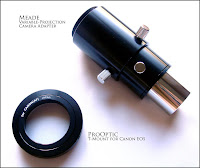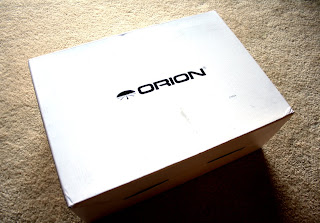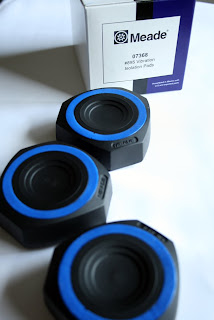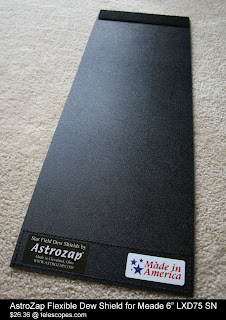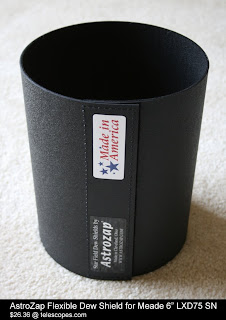
Photo of STS-126 on launch pad.




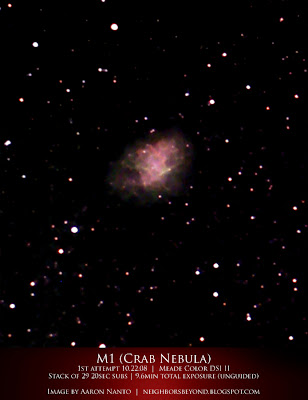



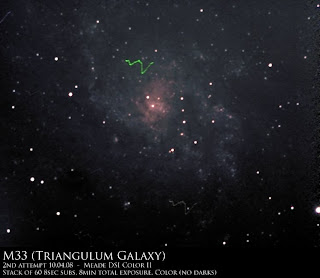



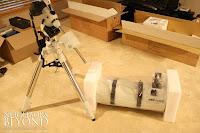
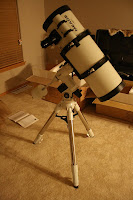
I've never been really scared driving at night until I decided to venture out of my area to check out exit 45, east from Seattle on I-90. I learned that this was a stargazing site far from the skyglow of any city and wanted to see what it was all about.
25mins after we (my wife and I) left our house, we got to exit 45 which is quite far from Seattle. The road pretty much leads to nowhere so there is nothing - no lights, dead ends and dirt roads. Driving off of the safe highway, we turned onto the exit, then went another 3 miles on a one-lane dirt road to the site which was supposed to be a clearing. Because of the darkness and bumpy nature of the road, it was a bit scary driving it, knowing that if anything happened to you help would be very far away. The trees didn't help either as they were leaning over the road so much you couldn't see the sky so it was very much like out of a scary movie. After a tense moment of hearing a very strange sound suddenly emanating from the left front tire (a rock had got into the break) we finally got to the clearing, which there was one other car present.
My wife was too scared to get out of the car so I got out to assess the car and location. After looking at the car and seeing that it was fine, I broke out the binoculars and looked at Andromeda. I could already tell that the viewing was better than from my house, but the full moon pretty much ruined any proper location evaluation.
I'm not sure if I'll ever go back there again as it was so remote that you really feel like you could be in danger from something, but then again I'm sure it would have been a great site to view the skies on a dark night. My suggestion is to bring a group of people along, and go earlier when there is some daylight to make the trip less scary.
I'm always looking for a good stargazing area, so if you have any suggestions, please let me know.



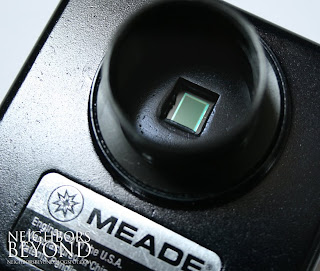
 It's the Orion GiantView 20x80 Binoculars! Sometimes when viewing the night sky and you don't want to set up a large telescope, whipping out some ultra-portable binoculars can do the trick nicely. I had previously owned some 10x50 Humvee binoculars which had allowed me to view the Andromeda galaxy for the first time, however it really was just a very faint blur in a sea of stars. The Orion GiantView 20x80 Binoculars fills that gap between low-power binoculars and a telescope where it has enough light-gathering power to view Deep Space Objects (DSO) and not have the setup time involved. The only downside to the GiantView 20x80 is that it is a little heavy to hold, so using a tripod is recommended (and the binoculars come with a built-in mount for photo/video tripods).
It's the Orion GiantView 20x80 Binoculars! Sometimes when viewing the night sky and you don't want to set up a large telescope, whipping out some ultra-portable binoculars can do the trick nicely. I had previously owned some 10x50 Humvee binoculars which had allowed me to view the Andromeda galaxy for the first time, however it really was just a very faint blur in a sea of stars. The Orion GiantView 20x80 Binoculars fills that gap between low-power binoculars and a telescope where it has enough light-gathering power to view Deep Space Objects (DSO) and not have the setup time involved. The only downside to the GiantView 20x80 is that it is a little heavy to hold, so using a tripod is recommended (and the binoculars come with a built-in mount for photo/video tripods).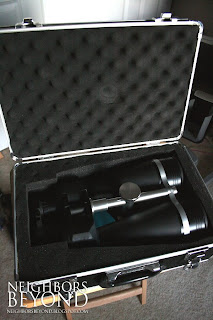

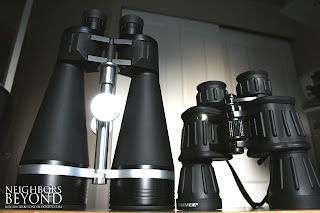


Since my primary purpose for buying a scope is to do astrophotography, and I already have a Canon XTi camera, this next item is another must-have. The Meade Variable-Projection Camera Adapter was made so that people with SLR cameras can attach it to a telescope to take wide-field, high-resolution images. I have a DSI II Color on order, but it is limited to taking photos up to 752x852...not very high resolution at all - this is where a SLR camera fills the gap as my XTi can take images up to 3888x2592. Don't forget to order the T-Mount for your particular SLR camera as well if you get the adapter.
